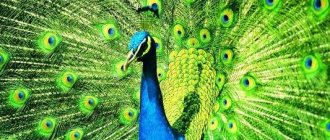In the myths of various countries and peoples there are legends about the legendary bird - the Phoenix. This embodiment of the fiery element and endless beauty has become a symbol of eternal life and resurrection. In the legends of Japan and China, Greece and Rus', we can find sincere admiration for the mythical creature. The Phoenix was often identified with the Sun and its inexhaustible energy.
This bird emitted perfect light, which destroyed everything dark and evil that is in the world. In addition, the very existence of the Phoenix gives hope that the shining light will certainly be reborn. This is a truly unique character in legends. But what does the name of this bird mean? When was it first mentioned? And how does Phoenix live?
Where does the legend of the mystical feathered entity come from?
In order to understand where the legends about the existence of the fire bird Phoenix came from, you should turn to the mythology of Ancient Egypt. Of course, it will not be possible to find specific information about the exact date of appearance of this incredible creature, but it is quite possible to trace the presence of an amazing feathered creature in many legends.
The first legend about the Phoenix bird says that this was the name for the ascent of Sirius, which occurs in a spiral and coincides with the moment of increasing the volume of water in the Nile. This tide meant that the first harvest would soon emerge.
The Egyptians called this creature by the name Benhu.
The world also knows the legend of the gray heron. Historians suggest that Phoenix is the main character of this tale. It says that the first settler on Earth was a gray bird. The creature was sent to the mortal world by the Sun God. The legend originates in the ancient Egyptian city of Heliopolis. Its inhabitants believed that the feathered creature was not immortal. The deity gave him 500 years of existence.
Origin of the image
Sirin owes its origin to the literary medieval tradition. The most ancient images of Sirin date back to the 10th century and are preserved on clay plates, kolta and temple rings.
In some legends, Sirin is considered a negative character, so they even begin to consider her a dark bird, a messenger of the underworld.
Stories about the sweet and enchanting effect of Sirin’s singing on humans are contained in such literary monuments of the 17th century as Physiologists, Azbukovniki, Chronographs.
In apocryphal literature it is reported that the Sirin bird is afraid of loud sounds, and in order to scare it away, people ring bells, shoot cannons, and blow trumpets.
Paintings by unknown artists with a detailed plot had the following inscriptions:
In the cartouche the title is “The Sirin Bird of Holy and Blessed Paradise” and the text:
“As soon as a person hears her voice, he is captivated by thoughts and forgets all that is temporary and continues to follow her until he dies, and never stops hearing her voice.” Near Sirin’s head there is an inscription: “By sight and voice.” Under the picture is the title: “There is a legend about this bird.” Below is the text: “In the Indian countries (which are closest to the blissful place of paradise) it is the custom for this bird to appear and proclaim songs such as hearing... to fly to dwellings, and faster than an eagle, taking off with speed from the harm of noise, it does not appear. (E.I. Itkina)"
In Russian spiritual poems, she, descending from Paradise to Earth, enchants people with singing; in Western European legends, she is the embodiment of an unfortunate soul. Derived from the Greek Sirens. In Slavic mythology, a wonderful bird, whose singing disperses sadness and melancholy; appears only to happy people.
Sirin is one of the birds of paradise, even its very name is consonant with the name of paradise: Iriy. However, these are by no means the bright Alkonost and Gamayun. Sirin is a dark bird, a dark force, a messenger of the ruler of the underworld.
Sirin in ancient Russian folklore is a large, strong, motley bird maiden with large breasts, a stern face and a crown on her head.
According to the description of ancient Russian beliefs, the sweet-voiced Sirin bird, like the destructive seabirds-maidens Sirens, also befuddled travelers with its sad song and carried them away into the kingdom of death.
In a later period, these features were supplanted, and the Russian Sirin was endowed with magical functions of a protective nature, personifying beauty, happiness and the joy of being.
Sometimes the beautiful bird Sirin is found in the form of a real bird, without any human components. Her feathers are covered with an invisible mass, symbolizing the Elements. “Her wings were white with blue and red stripes, like caramel, her beak was soft purple, pointed, blade-like, and her eyes were bright, green, the color of young leaves, and wise, benevolent.”
According to the description of ancient Russian beliefs, the sweet-voiced Sirin bird, like the destructive seabirds-maidens Sirens, also befuddled travelers with its sad song and carried them away into the kingdom of death. In a later period, these features were supplanted, and the Russian Sirin was endowed with magical functions of a protective nature, personifying beauty, happiness and the joy of being
Sirin and Alkonost birds
artist Vasilina
“BIRD OF SIRIN” (Firebird) Bronze clasp with gilding of the 11th-12th centuries from the Yulovsky settlement, Penza region (probable capital of the Burtas principality) in the form of a firebird. There are no analogues. In some details it is close to ancient Russian ornaments. (Kept in a private collection)
Phoenix bird in ancient Greek and Roman myths
The most ancient information proving whether phoenixes actually exist is found in the writings of Herodotus back in the 5th century BC. It says that the magical creature was born in Arabia. It lives with its parents for exactly five hundred years, until its loved ones meet death. After this, the feathered entity, along with the bodies of its parents, goes to the city of Geopolis, to the Temple of its creator, the Sun God, where it buries them.
This legend is slightly different from the ancient Egyptian one, but they have something in common: neither one says that the Phoenix bird rose from the ashes. If you look at the works of later ancient Greek thinkers, you can, on the contrary, trace one common feature in all of them, which is endowed with an incredible creation. It said that the creature was capable of both self-destruction and rebirth from its own ashes.
If we talk about the age and years of life of a mythical feathered creature, then, for example, in the works of Manilius one can find the following data: the bird lives on Earth The Great Platonic Year (an astronomical concept is the time during which five planets, the Sun and the Moon return to their places) .
Residents of ancient Rome believed that a mystical creature existed in real life and served the emperor. The Phoenix bird, rising from the ashes, symbolizes such qualities as power, authority, strength and immortality. Despite all its power, the mystical bird could not save the greatest empire from collapse.
Preparing the Phoenix for the Next Cycle
After resurrection, the phoenix created a special egg. After that, he went to collect myrrh, the best that exists on earth. Upon returning, the phoenix used its beak to hollow out a hole in the egg, where it placed the remains of its former body, and sealed the hole with myrrh. He handed over this egg to the servants of Heliopolis for safekeeping. It was believed that they were kept in the temple of Ra. After this, the phoenix finally flew away to its usual habitat (paradise, space or other directions).
Some legends generally say that the phoenix was a cosmic bird. This is quite consistent with the Egyptian version of the origin of the bird, for the phoenix was born from nothing and created everything. The Egyptians believed that the phoenix flies far beyond the solar system, to distant systems that were also partially considered its home.
What does the Phoenix bird mean among Christians and in Jewish Kabbalah?
The significance of the Phoenix bird in the Jewish religion can be traced if you pay attention to mythology. One of the legends says that while in the Garden of Eden, the first woman Eve treated not only her lover to fruit from the Tree of Knowledge, but also all the creatures that caught her eye.
Only the Phoenix, who was gifted with immortality for his indestructibility, was able to resist the temptation to taste the forbidden fruit. The creature lives peacefully for one thousand years, and, upon expiration of the period, burns down in its home and is reborn again for another thousand years.
You can find another legend about the origin of this amazing creature. It says that at the time of the Flood, there was a bird on Noah’s Ark that did not require food from people. Noah wondered why the creature starved itself, and he asked the feathered creature about it. To which I received the answer that she did not want to bother people over trifles and cause inconvenience with her requests. Noah was deeply touched and surprised by this answer. For this modesty, he asked God to grant the creature immortality.
In Christianity, the Phoenix is identified with eternity, infinity, immortality and resurrection. Many believe that the delightful creature is a symbol of Jesus Christ. Ancient Christians decorated their tombstones with the image of the Phoenix, which signified the victory of life over death.
Alkonost
The wonderful bird Alkonost, or Halcyon, with a female appearance and similar to a kingfisher, lives either on the banks of the Euphrates, or on the island of Buyan, or in the ancient Slavic paradise of Iria. The fabulously beautiful creature lays its eggs on the seabed, at the edge of the sea, and for seven days, until the chicks are born, according to legend, the weather is calm and windless. Alkonost is a bird of goodness and sadness. It does not pose any danger to humans, but on the contrary, it mourns those killed on the field after the battle. And Alkonost’s singing, similar to love itself, is so beautiful that whoever hears it can forget everything in the world.
Alkonost (alkonst, alkonos) - in Russian and Byzantine medieval legends, the bird of paradise-maiden of the sun god Khors, who brings happiness. According to the legend of the 17th century, the alkonost is near heaven and when he sings, he does not feel himself. Alkonost consoles the saints with his singing, announcing to them the future life. Alkonost lays eggs on the seashore and, plunging them into the depths of the sea, makes it calm for 7 days. Alkonost’s singing is so beautiful that those who hear it forget about everything in the world. Alkonost is also considered the bird of Dawn, which controls the winds and weather.
artist Bilibin “Alkonost”
Information about the existence of an amazing feathered creature in Slavic mythology
In Slavic fairy tales you can find two powerful feathered creatures. This is Finist the Clear Falcon (who was actually a man) and the Firebird.
These two creatures have many similarities to the Phoenix. For example, the Firebird had the ability to lose life during the cold season and return to it with the first warming.
The finist also hibernates during the cold season, and wakes up again with the arrival of warmth.
Gamayun
The prophetic Gamayun bird is a wise messenger of the Slavic gods and a harbinger of happiness. Her name probably comes from the old word “gamayun”, that is, to lull. Gamayun's cry is good news, and she sings divine songs to people. Gamayun knows about everything in the world, knows the secrets about the origin of the earth and sky and is ready to tell about the future to everyone who knows how to understand the secret. In Slavic mythology, it was customary to turn to her for advice. According to popular beliefs, this miracle bird was born along with our world and its purpose is to remind people of the highest values of existence.
A. Shishkin
Gamayun is, according to Slavic mythology, a prophetic bird, a messenger of the god Veles, his herald, singing divine hymns to people and foreshadowing the future for those who know how to hear the secret. Gamayun knows everything in the world about the origin of earth and sky, gods and heroes, people and monsters, birds and animals. When Gamayun flies from sunrise, a deadly storm arrives.
Mystical bird from Ethiopia
Another world myth mentions a creature that came from Ethiopia and got its name thanks to the Assyrians. In the Ethiopian version, the magical bird had a rather strange appearance: it had a fish tail, a rooster's beak, a crane's forehead, a throat like a swallow, a turtle's back and the head of a duck.
The magical creature was simultaneously scarlet, gold, blue, black and white. Each color had its own special meaning. The Assyrians associated the immortal being with warmth, wealth, fire, and a good harvest. She ate bamboo seeds.
Stratem
The mysterious and gigantic Stratim bird, also known as the Straphil bird, is the archetype of the progenitor, the mother of all birds. She lives on the sea-ocean and holds the whole white world under her right wing. Stratim personified the most terrible and permissive forces of nature. She will flap her wing - the sea will become agitated, she will scream - a storm will rise, and if she will fly - she will cover the white light... Ships will sink in the sea, the deepest abysses will open up, cities and forests will disappear under water.
Magical feathered creatures in China and Japan
Chinese myths tell the most beautiful story of the Feng Huang bird. This creature was both feminine and masculine. Today in China, the fiery creature is identified with Onagadori chickens. These creatures have a luxuriously thick tail, exceeding 1 meter in length.
The most beautiful creatures were brought to Japan in the first millennium AD. These birds have changed a lot. Their tail now reaches about 13 meters. Based on this fact, we can say with almost 100% certainty that at least one magical individual has survived to this day.
Swan Princess
The graceful Princess, half swan, half beautiful maiden, became not so much a character in the mythology of folk tales, but a widespread image in Russian art. The wonderful swan bird, living on the shore of the blue-blue sea, first flew into Pushkin’s “The Tale of Tsar Saltan”, then into Rimsky-Korsakov’s opera of the same name, and then forever remained in Vrubel’s most famous masterpiece
artist M.A. Vrubel "The Swan Princess"
The princess from Vrubel’s canvas is mysterious and enigmatic, her face is sad. The Swan Princess is depicted against the background of twilight descending over the sea, a narrow strip of sunset on the horizon and a distant city (the background was the scenery for the play - the city of Ledenets, made by the artist).
“But the picture is not a costumed portrait of an artist, it is a charming myth about the highest beauty, about the mystery of its manifestation in the world. In the aesthetics of symbolism, the swan personifies inspiration, which can both elevate the soul and lead it to the knowledge of the dark, mysterious sides of life. The artist endows his image with demonic features. The Swan Princess is a creature of dual nature; she personifies two elements - dark, cold water and at the same time upward-looking airy, heavenly. The artist is trying to capture the moment of the maiden’s transformation into a bird, the wonderful metamorphosis of forms that seem to melt in the last rays of the sunset. It conveys the elusive movement of the departing princess. The image appears to be an ethereal, ghostly apparition.”
A.P. Ivanov spoke about this picture: “Isn’t that the Virgin-Offense herself, who, in the words of the ancient poem, “splashes her swan wings on the blue sea” before the days of great disasters?”, referring to the character from “The Tale of the Regiment” Igor".
Rules for working with a talisman
If you decide to work with this symbol, then it is best to buy or order (make) an amulet from iron. Wood or stone are weak vessels for its energy. You can use the talisman during your magical practices; it enhances the words spoken by you and activates powerful flows of energy. Just put it around your neck and wear it during the ritual.
There is also a list of recommendations for working with the amulet:
- During the ritual, 9 red candles must be lit.
- Do not start work with a headache or during illness, the energy of fire is the energy of the strong in spirit.
- It is best to wear the amulet on a naked body under clothing or your ritual costume.
- Do not use a wooden amulet with a phoenix - it will be a poor conductor of energy.
- The Phoenix will not tolerate water nearby during the ritual.
- Don't organize a spontaneous ritual.
Otherwise, this is a simple symbol to work with. It will give you the necessary boost of energy needed for magical practices.











